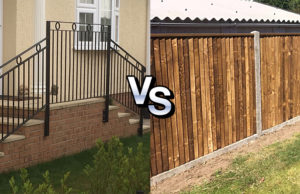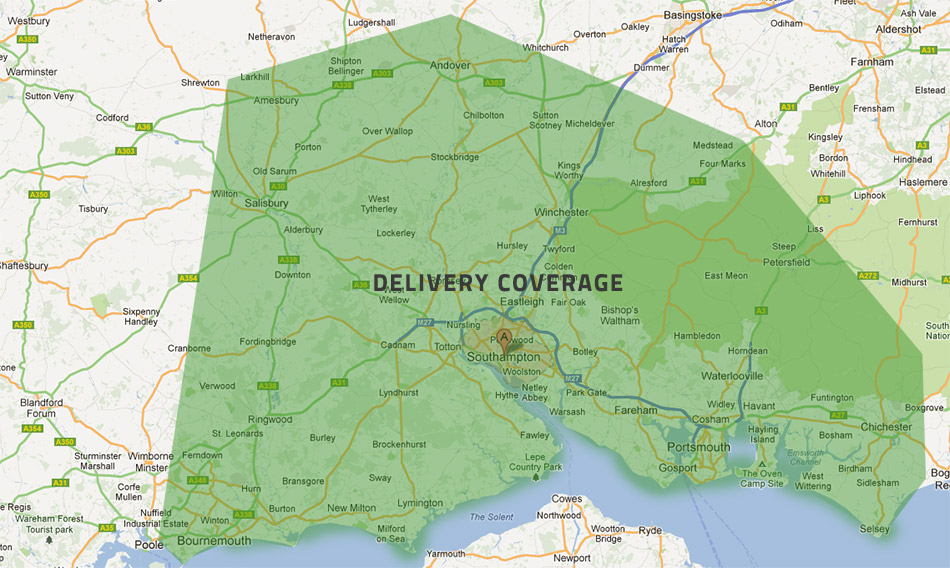Good fences make good neighbours – or so they say. With a good fence between you and your neighbours, we can relax and enjoy the sanctuary of our home gardens away from distractions. But we all know too well that things can go wrong when our fence or wall becomes in need of repair or replacement. Things can then quickly turn to the question of who’s actually responsible for those repairs. Is it you, your neighbours – or both of you?
Whilst there’s no strict rule for resolving this, here’s a few avenues to look into if you find yourself in a boundary dispute.
How to find out who owns a boundary fence
If you’re unsure about who owns a boundary fence, your first point of call should be to check any copies of your title deeds – or ask the Land Registry for Office Copies and a Title Plan. You can also request these in relation to your neighbour’s property too.
The Title Plan will show either the general boundaries of the property, or the exact boundaries (if the Land Registry has that information), whilst the Office Copies will give you information about the property and its ownership. Although they don’t make for the most exciting of reads, these documents will often contain covenants that establish whose responsibility it is for maintaining a boundary feature like a fence.
The Land Registry may also have the historical title deeds relating to your property, which may help to identify who’s responsible for which boundary. However, it’s important to note that these documents aren’t conclusive to ownership of boundary features.
Maintaining a fence
Your Title Plans may show a ‘T’ mark on all or some of the boundaries. If this is the case, and there is a T mark on either side of the boundary (making a ‘H’ mark) it indicates that it’s a joint boundary and both you and your neighbour are jointly responsible. However if there is no T mark, you have a little more investigating to do…
The question then becomes about whether anyone has assumed responsibility for that boundary – for example by placing or maintaining a fence there? If this is the case, then that party is legally responsible for the maintenance of the fence. If the fence has been maintained by both you and your neighbour, it may be regarded as a party fence – making you both jointly responsible for it.

So now you might be a little clearer about who’s responsible for what – and if actually you should both be footing the bill, but establishing legal responsibility can be just the beginning. Here’s some other common questions and a little help on where to start.
-
Can responsibility for maintaining a fence change to a neighbouring property owner? Yes. Despite what the Office Copies or Title Plans say, if an adjoining property owner has assumed responsibility for a boundary, then that property owner may be legally responsible for it.
-
If the fence posts are in one person’s garden, is the fence automatically their responsibility? Not necessarily. Whilst it’s normal to construct a fence in the garden of the person who’s responsible for the boundary, the location of the fence posts don’t dictate who’s legally responsible for it.
-
Is my fence boundary generally to the left? No, this is a common misconception that a property owner is responsible for the boundary on the left, however it’s not necessarily the case.
What rights do I have in relation to my neighbour’s fence?
-
If your neighbour is legally responsible for a boundary fence you shouldn’t paint your side of the fence or attach nails to it etc, unless you have permission. Doing so without permission could amount to criminal damage – and nobody wants that sort of hassle!
-
If you’re unsure who owns the fence, grab a good old cuppa and have a chat with your neighbour to agree who will maintain or replace the fence, and share the cost between you. You could also enter into a Boundary Agreement, signed by you both – to set out who’s responsible for a boundary.
-
Can I force my neighbour to maintain their fence? Unfortunately this is a bit of a tricky one. Whilst some title deeds contain a provision (covenant) that requires the owner of the boundary to maintain it – it’s relatively uncommon. If the deeds don’t contain a covenant, then there’s no legal responsibility of the boundary owner to keep it in good repair. The only silver lining, perhaps – is that the owner of the boundary feature may be liable for any damage resulting from a boundary feature that falls into disrepair.
So, we hope you found this article useful – even if it’s not the most interesting! If you’re looking at buying a property, you should establish as early as possible which boundary fences and walls you’ll be responsible for.
If the time comes when you want to replace your fence – the more fun part! – then at New Forest Fencing we’re more than happy to help.
Get in touch for a free quote and let’s get your home and garden on its way to being your sanctuary.


















